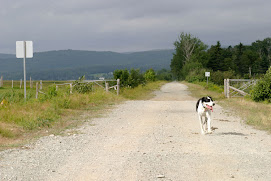It is not a news flash that purple loosestrife has been crowding out native species in the northeastern U.S. since it was introduced in the early 1800s, but if a scientific study of invasive species at Walden Woods mentions global warming as a possible cause, the story is catapulted to both the Globe’s front page (2/4/10) and its editorial page (2/7/10).
The ecosystem at Walden Pond may be different than it was 150 years ago, but this is hardly incontrovertible evidence that we must rush through ineffectual trillion dollar carbon taxes to reduce manmade CO2. All plants prosper with increased CO2, and it may well be true that the “warming trend gives nonnative plants an edge.” This however does not validate either of the two essential tenets of the theory of anthropogenic global warming, that warming is both manmade and catastrophic.
By the way, although a long-term warming trend is not under question, I’d like to see the footnotes verifying the Globe’s cited warming trend in Concord of 4.3 degrees F in the last 150 years; the IPCC’s number for the planet is closer to 1.5 degrees F. Have the Boston suburbs really experienced three times the warming of the global average?
skip to main |
skip to sidebar


Culture War Dispatches
from a Progressive People's Republic
Daisy takes a walk

"I detest the notion of a new dawn in which homo sapiens would live in harmony. The hope this Utopia engenders has justified the bloodiest exterminations in history." --Francois Bizet, Khmer Rouge survivor
"Of all tyrannies, a tyranny sincerely exercised for the good of its victims may be the most oppressive." --C.S. Lewis
Daisy
